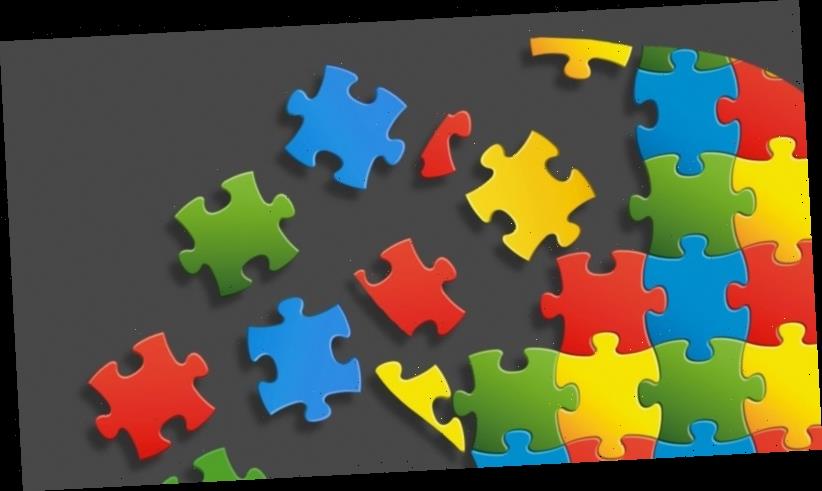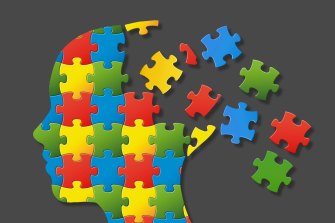This Christmas brought with it an underwhelming array of gifts that I seem to have received every year since the birth of Jesus Christ himself; socks by the score, multipacks of underpants and, as ever, some bizarre novelty gifts that I'll never use (collapsible plastic pint glass anyone?).
Several studies have suggested that doing jigsaws can help enhance cognitive function as you age.Credit:Alamy
But one, from my wife, was tantalisingly different. Initially I had assumed it was a board game of some description. But no. As the wrapping paper fell away, a breathtaking Alpine scene appeared before me, with the words "HIGH QUALITY JIGSAW PUZZLE" writ large, presumably in the event I couldn't work out what it actually was.
I have no idea why she bought it, other than to confine me to one room for very long periods.
After all, the last time I did a jigsaw it was wooden with just eight pieces so large they couldn't possibly constitute a choking hazard. And it had Bob the Builder on it. But I cleared the kitchen table and, with 1500 tiny tiles lying there, taunting me, set to work.
And you know what? I absolutely loved it. For a stolen hour here and there, it was bliss.
We owe this rarest of pleasures to the London engraver and cartographer John Spilsbury who, in 1767, cut shapes out of his wooden maps to use as an educational tool. He called them "dissected maps" which, on the face of it, wasn't that catchy. Still, the idea caught on and soon "jigsaws" were being sold commercially.
More than 250 years later, and Spilsbury's brainwave can be found in most homes in some shape or form and it has some very high-profile fans, too. The Greatest Showman star Hugh Jackman has live-streamed progress with his puzzles on Instagram and Microsoft billionaire Bill Gates always takes wooden jigsaws with him on his holidays.
Tracey Thorn, the author and singer with Everything but the Girl, has been known to tweet about her passion for jigsaws and DJ Fatboy Slim has also found solace in them, saying they are "good for losing yourself".
He's right. Jigsaws can be effective stress relievers (assuming there are no pieces missing) but the range of health benefits to be gleaned from tackling the tiles can be far wider. The simple genius of the jigsaw is that it works both sides of the brain, analytical and creative, and also stimulates the production of both acetylcholine, crucial when you need to pay attention, and dopamine, the chemical that plays a key part not just in memory but the sense of feeling rewarded, too.
As you move into your 40s, the number of neurotransmitters in the brain begins to decline and while that doesn't really alter the brain's storage capacity, it does affect our ability to retrieve and process information.
Better cognitive function
However, several studies have suggested that doing jigsaws can help enhance cognitive function as you age. Research such as the MacArthur Study from Johns Hopkins University in 1995 tracked healthy men and women from middle age through into old age and found that participants who did daily puzzles were those with the highest-ranked mental ability as they moved into their 80s.
In 2013, meanwhile, the Advanced Cognitive Training for Independent and Vital Elderly (ACTIVE) study of individuals over the age of 65 found that consistently engaging in puzzles and visual recognition tasks such as jigsaws improved memory.
Of course, that's not really why my wife bought me the jigsaw (at least I don't think it is) but giving the grey matter a regular workout makes perfect sense, and it appears that the earlier you start the better it can be for you. In 2017, a report from the Global Council on Brain Health recommended that people take up these mentally stimulating tasks earlier in life, even in their 20s, the idea being that the longer you can do them, the greater and more effective your brain function will be as you age. Besides, I'm hooked. In fact, I've just bought a new jigsaw puzzle to do, upping the ante to a testing 3000 pieces. This time I've gone for majestic African animals congregating around a waterhole.
The only problem is that the kitchen table isn't big enough.
The Telegraph, London
Source: Read Full Article

